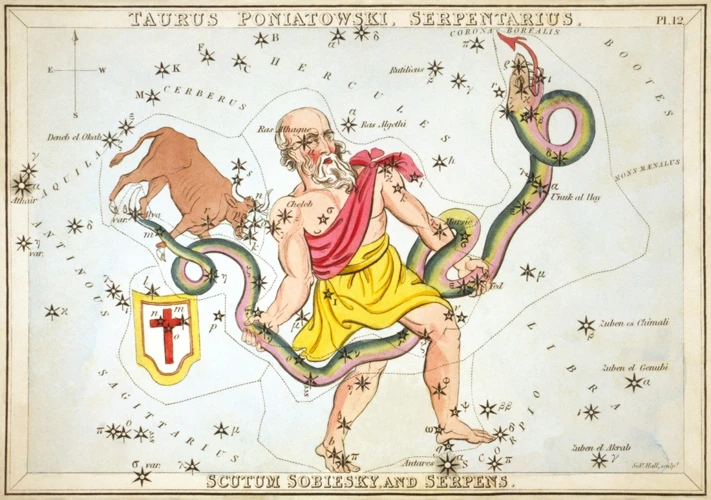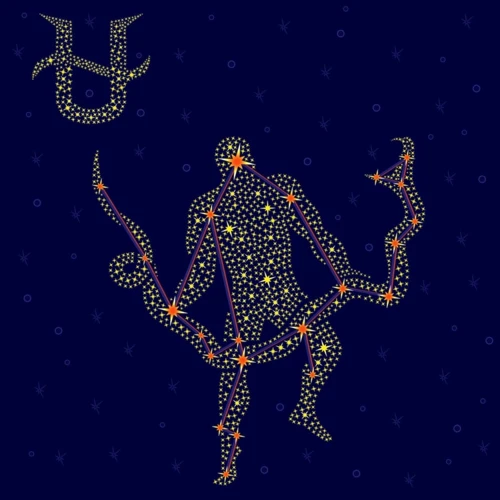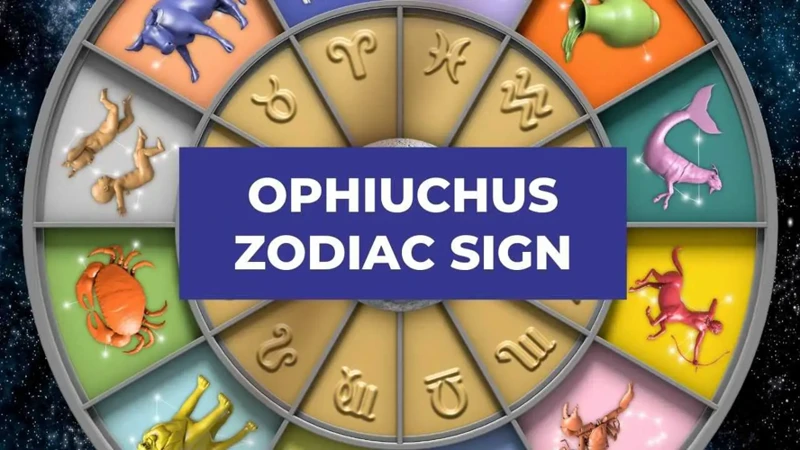The enigmatic coil of a snake has captivated the human imagination for centuries, weaving its way into the deep recesses of mythology and symbolizing a myriad of concepts. From ancient civilizations to modern folklore, the snake has been both revered and feared, representing everything from transformation and healing to temptation and danger. In this article, we will delve into the rich tapestry of snake symbolism found in ancient mythology, exploring its associations with transformation, good and evil, healing and medicine, creation myths, and even folklore and superstitions. Join us as we unravel the symbolic meaning of snakes and unlock the secrets they hold in cultures around the world.
Contents
- Snakes in Ancient Mythology
- Snakes as Symbols of Transformation
- Snakes as Symbols of Good and Evil
- Snakes as Symbols of Healing and Medicine
- Snakes in Creation Myths
- Snakes in Folklore and Superstitions
- Conclusion
- Frequently Asked Questions
- References
-
Frequently Asked Questions
- 1. Why are snakes such common symbols in mythology?
- 2. What role do snakes play in ancient Egyptian mythology?
- 3. How are snakes portrayed in Greek mythology?
- 4. What is the significance of snakes in Norse mythology?
- 5. How do snakes represent transformation?
- 6. Why are snakes seen as symbols of wisdom and knowledge?
- 7. How do snakes symbolize good and evil?
- 8. What is the connection between snakes and healing?
- 9. How do snakes feature in creation myths?
- 10. What are some superstitions and folklore surrounding snakes?
- References
- Read More
Snakes in Ancient Mythology

In the realm of ancient mythology, snakes held a prominent place in various cultures, captivating the imaginations of civilizations across different continents. Let us explore some of the significant roles played by these slithering creatures in Egyptian, Greek, and Norse mythologies.
In ancient Egypt, the snake was closely associated with divine beings and held symbolic significance. The goddess Wadjet, often depicted as a cobra, represented protection and royalty. Her presence was believed to ward off evil and safeguard the pharaohs. Another Egyptian deity, Apep, embodied chaos and destruction, often depicted as a giant serpent that sought to devour the sun god Ra during his nightly journey through the underworld. The serpent’s battles with the sun god were seen as a metaphorical struggle between order and chaos, a recurring theme in Egyptian mythology.
Greek mythology also attributes symbolic meaning to snakes, with various gods and goddesses associated with serpents. Perhaps the most famous myth involving a snake is the story of Medusa. Originally a beautiful woman, she was cursed by Athena and transformed into a terrifying creature with venomous snakes for hair. Anyone who looked into her eyes turned to stone, emphasizing the snake’s power to petrify and mesmerize. The god Apollo was sometimes depicted with a sacred serpent coiled around his arm, representing his connection to healing and knowledge.
In Norse mythology, the serpent has its own significant role in the form of the world serpent, Jormungandr. This colossal serpent encircled the entire world, biting its own tail. It was believed that when Jormungandr released its tail, it would signal the onset of Ragnarok, the catastrophic end of the world. The serpent’s presence highlighted the cyclical nature of existence and the destruction and rebirth inherent in Norse mythology.
The presence of snakes in ancient mythology showcases their diverse symbolism and association with various deities and concepts. From protection and chaos in Egyptian mythology to petrification and healing in Greek mythology, and the cyclical nature of existence in Norse mythology, snakes played a pivotal role in shaping ancient cultural beliefs and mythological narratives. Let us now delve deeper into the symbolic meaning of snakes in different aspects of mythology.
Egyptian Mythology
In Egyptian mythology, the snake held a significant place, intertwining itself with the beliefs and rituals of this ancient civilization. One of the most prominent snake figures in Egyptian mythology is the serpent goddess Wadjet, often depicted as a cobra. Wadjet was considered a protective deity, closely associated with both the pharaohs and the sun god Ra. She was the guardian of Lower Egypt and embodied royalty and power. The pharaohs wore the “uraeus,” a headdress adorned with Wadjet’s image, as a symbol of their divine authority and protection. The goddess was believed to ward off evil, protecting the pharaoh and the land of Egypt from harm. Her association with the cobra highlighted the symbolic significance of this creature in Egyptian mythology. Another snake-like figure in Egyptian mythology is Apep, a giant serpent representing chaos and destruction. Apep was seen as a force of darkness that sought to devour the sun god Ra during his nightly journey through the underworld. The battles between Ra and Apep served as metaphorical struggles between order and chaos, light and darkness, illustrating the Egyptian belief in the eternal conflict between these opposing forces. Through these representations, snakes in Egyptian mythology embodied concepts of protection, royalty, chaos, and the eternal cycle of life and death.
Greek Mythology
Greek mythology is rich with stories and symbolism involving snakes. These serpents often represent various gods, goddesses, and concepts. One of the most famous instances is the story of Medusa. Medusa, once a beautiful maiden, was cursed by the goddess Athena and transformed into a monstrous creature with venomous snakes for hair. Her gaze had the power to turn anyone who looked into her eyes to stone. Medusa’s snake hair symbolizes the mesmerizing and petrifying abilities of snakes, while her transformation serves as a warning against arrogance and hubris.
In Greek mythology, the god Apollo was also closely associated with snakes. Apollo was sometimes portrayed with a sacred serpent coiled around his arm or a staff. These depictions showcase the snake’s role as a symbol of healing and knowledge. Snakes were believed to possess healing powers, shedding their skin and renewing themselves, which emphasized the serpent’s connection to rejuvenation and transformation.
Another famous example in Greek mythology is the legend of the Python, a serpent-like creature that guarded the Oracle of Delphi. According to the myth, Apollo slew the Python and claimed the Oracle as his own, establishing his dominance over the prophetic site. This myth reinforces the concept of snakes as guardians of sacred knowledge and oracles, and Apollo’s victory over the Python solidifies his role as a divine figure associated with prophecy.
Greek mythology also introduces us to the symbol of the Caduceus, a staff with two entwined snakes and wings at the top. This staff was associated with Hermes, the messenger god. It represents the balance between opposing forces, with the intertwining snakes symbolizing duality and the wings representing swiftness and agility. The Caduceus came to be associated with healing and medicine, and it remains a symbol of the medical profession to this day.
The presence of snakes in Greek mythology showcases the varied symbolism and associations with these creatures. From Medusa’s petrifying stare to the healing powers of Apollo and the sacred knowledge guarded by the Python, snakes played significant roles in shaping the narratives and beliefs of ancient Greek culture. To learn more about the zodiac sign Ophiuchus, often associated with Greek mythology and snakes, you can explore our article on Ophiuchus traits and career choices.
Norse Mythology
In Norse mythology, snakes hold a significant place, with one serpent in particular, Jormungandr, taking center stage. Jormungandr, also known as the Midgard Serpent, is a colossal snake that encircles the entire world by biting its own tail. This serpent is one of the children of the trickster god, Loki, and the giantess Angrboda. According to the mythology, Jormungandr’s presence is integral to the balance of the cosmos.
Jormungandr’s role in Norse mythology is closely tied to the prophecy of Ragnarok, the end of the world. It is believed that during Ragnarok, Jormungandr will release its tail, causing enormous waves and chaos. The snake’s venom will spew into the air, poisoning the land and sea. During the apocalyptic battle of Ragnarok, Jormungandr will engage in a fierce battle with the thunder god, Thor, which ultimately leads to the destruction of both serpent and god.
The symbolism of Jormungandr in Norse mythology goes beyond its association with destruction and chaos. The serpent’s ability to encircle the world while biting its own tail represents the cyclical nature of existence and the concept of eternal return. It underscores the idea that life, creation, and destruction are interconnected and inseparable.
The presence of Jormungandr highlights the inherent duality in Norse mythology, where endings and beginnings are intertwined. The destruction caused by the serpent is seen as a precursor to the renewal and rebirth that follows Ragnarok. This dualistic nature is a recurring theme in Norse mythology, emphasizing the complex relationship between order and chaos, creation and destruction.
Snakes, particularly Jormungandr, play a pivotal role in Norse mythology. The colossal serpent’s connection to the prophecy of Ragnarok and its representation of the cyclical nature of existence make it a symbol of both destruction and renewal. The inclusion of Jormungandr in the rich tapestry of Norse mythology underscores the intricate balance between opposing forces that shape the ancient Northern European lore.
Sources:
– “Jormungandr.” Norse-Mythology.org, www.norse-mythology.org/gods-and-creatures/giants/jormungand/.
– “Norse Mythology: The World Serpent Jörmungandr.” Norse Mythology, norse-mythology.org/cosmology/the-world/jormungand/.
Snakes as Symbols of Transformation

Throughout mythological traditions, snakes have consistently been associated with the concept of transformation, representing profound changes and metamorphosis in various aspects of life. This symbolism can be observed through the shedding of skin, themes of rebirth and renewal, as well as wisdom and knowledge.
Shedding of Skin: One of the most recognizable traits of snakes is their ability to shed their skin. This process of shedding represents the shedding of old, worn-out aspects of oneself and embracing growth and renewal. Just as a snake slithers out of its old skin, individuals who resonate with this symbolism may embrace personal transformation and strive for self-improvement, leaving behind their old habits and beliefs.
Rebirth and Renewal: Snakes have long been associated with the concept of rebirth and renewal. In Egyptian mythology, the serpent deity Ouroboros, depicted as a snake or dragon devouring its own tail, symbolized eternal cycles of creation and destruction. This representation emphasized the cyclical nature of life, where death is seen as a necessary part of the rebirth process. Snakes’ ability to shed their skin was seen as a metaphor for rebirth and renewal, hinting at the endless potential for growth and transformation.
Wisdom and Knowledge: Snakes are often associated with wisdom and knowledge, symbolizing the transformational power of acquiring new insights and understanding. In Greek mythology, the serpent coiled around the Rod of Asclepius, the symbol of healing and medicine, represents not only physical healing but also the pursuit of wisdom and the transmutation of ignorance into knowledge. Snakes are also featured in the story of Adam and Eve in Judeo-Christian tradition, where the serpent tempts Eve with the forbidden fruit from the Tree of Knowledge, bringing about a profound shift in human consciousness.
The symbolism of snakes as agents of transformation is prevalent in various mythologies, highlighting their ability to inspire change, growth, and the pursuit of wisdom. Whether it is the shedding of old skin, the concept of rebirth and renewal, or the association with wisdom and knowledge, snakes serve as potent symbols that encourage individuals to embrace transformational journeys and navigate the complexities of existence.
Please continue to read about Ophiuchus and its significance.
Shedding of Skin
One of the key symbolic meanings attributed to snakes is their ability to shed their skin, representing transformation and renewal. The process of shedding old skin allows the snake to grow and adapt to its changing environment. In many mythologies and belief systems, this act of shedding is seen as a metaphor for personal growth, letting go of past burdens, and embracing new beginnings. The shedding of the snake’s skin symbolizes the cyclical nature of life, where change and transformation are inevitable. This concept is often associated with the Ouroboros, an ancient symbol depicting a snake eating its own tail, representing the eternal cycle of life, death, and rebirth. Just as the snake sheds its skin, we too are encouraged to shed our old ways and embrace personal growth and transformation.
Rebirth and Renewal
Rebirth and renewal are powerful themes associated with snakes in mythology, representing the cyclical nature of life and the transformative power of shedding one’s old self. The shedding of a snake’s skin became a symbol of rebirth, as the serpent emerged renewed and rejuvenated. This process of shedding serves as a metaphor for personal growth, transformation, and the ability to let go of the past. In ancient Egyptian mythology, the image of a snake shedding its skin was linked to the sun god Ra and his journey through the underworld each night. Just as Ra reemerged each morning, bringing light and renewal, the act of shedding represents the opportunity to let go of old patterns and embrace a fresh start.
The concept of rebirth is also evident in Greek mythology, particularly in the story of the mythical bird, the phoenix. According to the legend, the phoenix would undergo a fiery death and then rise from the ashes, reborn and renewed. This cycle of death and resurrection is mirrored in the shedding of a snake’s skin, further emphasizing the theme of rebirth.
In Norse mythology, the serpent Jormungandr, known as the world serpent, played a significant role in the cycle of life. As it encircled the world, biting its own tail, Jormungandr represented the cyclical nature of existence and the concept of rebirth after destruction. Its release from its own grasp was believed to initiate Ragnarok, the end of the world, but also the beginning of a new cycle of life and creation.
In many cultures, snakes are revered as symbols of transformation and renewal, reminding us of the inherent ability within ourselves to shed the old and embrace the new. The symbolism of rebirth and renewal associated with snakes serves as a potent reminder of the constant cycles of life and the transformative power of embracing change and growth. It invites us to reflect on our own lives, letting go of outdated beliefs and behaviors, and opening ourselves up to new possibilities.
Wisdom and Knowledge
Across different mythologies, snakes have often been associated with wisdom and knowledge, serving as symbols of enlightenment and divine insight. This symbolism can be observed in various mythological tales and cultural beliefs.
In Greek mythology, the snake was linked to the god Apollo, renowned for his wisdom and prophetic abilities. Apollo’s sacred python, known as Pythia, resided in the temple of Delphi. It was believed that Pythia, while under the influence of Apollo, would enter a trance-like state and deliver prophecies to those seeking guidance. The snake represented the enlightened knowledge bestowed upon Apollo and the temple, serving as a conduit between the mortal world and the divine realm.
In Hindu mythology, the snake god Vasuki played a pivotal role in the churning of the ocean of milk. According to the myth, the gods and demons joined forces to churn the cosmic ocean in search of the elixir of immortality. Vasuki, the king of serpents, coiled around Mount Mandara and acted as the rope for the churning process. The snake’s involvement symbolized the wisdom and cosmic energy required for this monumental task, illustrating the serpent’s connection to divine knowledge.
In Norse mythology, the god Odin, known for his wisdom and intellect, possessed two faithful animal companions: Huginn (Thought) and Muninn (Memory). These supernatural birds would fly across the world and gather information, relaying it back to Odin. It is said that Odin also possessed an association with snakes, particularly with the mythical creature Jormungandr, the world serpent mentioned earlier. This connection further emphasizes the serpent’s link to wisdom and knowledge.
The snake’s association with wisdom and knowledge extends beyond specific mythologies. In many cultures, snakes have been revered as guardians of hidden knowledge, often symbolizing the pursuit of truth and understanding. Their ability to shed their skin and renew themselves also represents the ongoing process of learning and growth. Snakes, with their keen senses and quiet observation, embody the idea that knowledge is attained through deep introspection and observation of the natural world.
The symbolic connection between snakes and wisdom has transcended time and continues to resonate with people today. It reminds us to seek knowledge, embrace growth, and strive for enlightenment in our own lives.
Snakes as Symbols of Good and Evil

Snakes have long been associated with the duality of good and evil in mythology, often embodying both aspects simultaneously. They are seen as guardians of sacred knowledge and wisdom, yet also as agents of temptation and deception.
In various mythological traditions, snakes are depicted as guardians and protectors of hidden wisdom. In Greek mythology, the sacred serpent Python was associated with the Oracle of Delphi, where priestesses provided prophecies and divine guidance. The snake symbolized the divine knowledge bestowed upon these priestesses, making them intermediaries between the mortal and divine worlds.
Similarly, in Hindu mythology, the serpent deity Nagas is revered for their deep wisdom and knowledge. They are believed to possess secret teachings and spiritual insights. Nagas are often depicted as powerful beings who guard valuable treasures or safeguard sacred sites.
However, snakes are also portrayed as agents of temptation and deception. In Judeo-Christian tradition, the serpent in the Garden of Eden enticed Eve to eat the forbidden fruit, leading to the fall of humanity. This portrayal of the snake as a cunning and deceitful creature resonates with its association with temptation and the corruptible nature of human desires.
In Norse mythology, the trickster god Loki often transforms into a serpent, using his shape-shifting abilities to deceive and cause chaos. This further highlights the snake’s association with deceit and malevolence.
The contradictory nature of snakes as symbols of good and evil is reflective of the complex human understanding of morality and the constant struggle between opposing forces. They represent the capacity for both enlightenment and corruption, reminding us of the delicate balance between light and darkness.
Next, we will explore how snakes are also viewed as symbols of healing and medicine in various mythologies.
Snakes as Guardians of Sacred Knowledge
In various mythological traditions, snakes are often portrayed as the guardians of sacred knowledge, entrusted with the wisdom and secrets of the universe. For example, in Hindu mythology, the snake god Vasuki is depicted as a powerful serpent coiled around the god Shiva’s neck, symbolizing protection and the preservation of cosmic knowledge. Similarly, in Mesoamerican mythology, the feathered serpent god Quetzalcoatl is associated with knowledge, wisdom, and enlightenment. In ancient Greek mythology, the god Hermes, often depicted with snakes, was revered as the messenger of the gods and the guide to the underworld. The serpentine staff known as the caduceus, which is associated with Hermes, has become a symbol of medicine and healing, emphasizing the snake’s connection to knowledge and wisdom. These mythological associations highlight the belief that snakes possess a profound understanding of the mysteries of the universe and serve as custodians of sacred knowledge.
Snakes as Agents of Temptation and Deception
Snakes have long been associated with temptation and deception in various mythologies and religious texts. Their serpentine nature, often characterized by their sleek and cunning movements, has led to their portrayal as deceitful creatures that entice and lead others astray.
In Greek mythology, a prime example of snakes as agents of temptation and deception is the story of the Garden of Eden. According to Christian tradition, a serpent approached Eve in the Garden and tempted her to eat the forbidden fruit from the Tree of Knowledge. The serpent’s smooth words and manipulative tactics led to Eve’s downfall and the subsequent expulsion of humanity from paradise. This narrative underscores the notion of snakes as cunning and deceptive creatures, playing a pivotal role in the fall of mankind.
Similarly, in Norse mythology, there is a tale involving Loki, the trickster god, and his involvement with snakes. In one account, Loki takes on the form of a serpent to deceive and betray the blind god Hodr, leading to the death of the beloved god Balder. Here, the snake becomes a symbol of treachery and manipulation, representing Loki’s inherent deceitful nature.
In Hindu mythology, there is a popular story of the serpent king Vasuki, who played a pivotal role in the churning of the cosmic ocean. During this event, the gods and demons joined forces to churn the ocean, resulting in the appearance of various treasures and divine beings. However, Vasuki, acting as a tempter, creates a sense of unease and desire for power among the participants, using his influence to stir conflict and unbalance the world.
These examples demonstrate how snakes have been consistently portrayed as instruments of temptation and deception across different mythological traditions. Their ability to beguile and mislead has made them synonymous with trickery and the allure of forbidden knowledge. Such symbolism warns against succumbing to temptation and the perils of misplaced trust in snake-like figures in both mythological narratives and real-life situations.
Snakes as Symbols of Healing and Medicine

In various ancient cultures, snakes were seen as powerful symbols of healing and medicine. Their association with healing practices can be traced back to ancient medical traditions and the belief in the serpent’s ability to restore health and vitality. Explore the significance of snakes as symbols of healing and medicine in ancient times.
Throughout history, snakes have been connected to medical practices in different cultures. In ancient Egypt, the symbol of the serpent was linked to the healing deity Imhotep, who was considered the god of medicine and depicted with a serpent coiled around a staff. The serpent became a symbol of knowledge and wisdom in medicine. Similarly, in ancient Greece, the god Asclepius, associated with healing and medicine, was often depicted with a staff encircled by a snake, forming the basis for the modern-day symbol of medicine, the Rod of Asclepius.
Snakes were believed to possess mystical powers of healing and transformation. In ancient Indian Ayurveda, the serpent is considered a representation of Kundalini energy, believed to be the transformative energy residing at the base of the spine. When awakened, this energy was said to bring about physical and spiritual healing. Snakes were also recognized for their ability to shed their skin, a process seen as symbolic of renewal and rejuvenation.
The ancient Mayans revered the feathered serpent god, Quetzalcoatl, who was associated with healing, medicine, and fertility. Quetzalcoatl was believed to have taught the Mayan people the secrets of medicine and healing, emphasizing the snake’s role in curing ailments and maintaining well-being.
Snakes as symbols of healing and medicine were not limited to ancient civilizations. In Chinese medicine, the snake plays an essential role. The Chinese concept of Qi, the vital life force, is believed to flow throughout the body. It is represented by snakes in the caduceus-like symbol, highlighting the snake’s connection to energy, balance, and healing.
These examples further illustrate the prominent role that snakes played as symbols of healing and medicine in ancient cultures. The serpent’s association with ancient deities and its ability to shed its skin for renewal symbolize the qualities of regeneration and rejuvenation. The enduring symbolism of snakes in the realm of healing and medicine demonstrates the deep-rooted belief in their transformative and curative powers across cultures and civilizations.
Snakes in Ancient Medical Practices
In ancient times, snakes held a significant place in medical practices, symbolizing healing and medicine. The ancient Greeks, for instance, associated snakes with the god of medicine, Asclepius. Snakes were often depicted on his staff, known as the Rod of Asclepius, which has since become a widely recognized symbol of medicine. The presence of snakes in healing practices can also be seen in ancient Egypt, where they were associated with the goddess Wadjet, believed to possess healing powers. Snake venom was utilized in ancient medical treatments, serving as the basis for early forms of antivenom and remedies for various ailments. The connection between snakes and medicine in ancient cultures demonstrates the respect and reverence accorded to these creatures for their perceived healing abilities.
The Rod of Asclepius
The Rod of Asclepius, a widely recognized symbol in the realm of medicine and healing, has its origins rooted in ancient Greek mythology. This emblem consists of a single serpent wrapped around a rod or staff, symbolizing the power of healing and medicine. It is directly associated with Asclepius, the Greek god of medicine and health.
According to legend, Asclepius possessed exceptional healing abilities and was revered as the patron deity of physicians. One of the most well-known stories involving Asclepius and his association with snakes revolves around his upbringing. Asclepius was raised by the centaur Chiron, who taught him the secrets of healing. During his training, Asclepius witnessed a snake bringing healing herbs to another snake, which inspired him to use snakes as a symbol of healing.
The Rod of Asclepius became an iconic representation of the medical profession, reflecting the virtues of wisdom, knowledge, and the ability to restore health and well-being. Even today, it is widely recognized as a symbol of medical and healthcare organizations, often seen on medical emblems, staffs, and uniforms.
It is important to note the distinction between the Rod of Asclepius and the Caduceus. While both symbols involve serpents, the Caduceus, a rod with two snakes intertwined and wings at the top, is associated with the god Hermes, known for his role as a messenger of the gods and guide to the underworld. The Caduceus is more closely linked to commerce and is incorrectly used as a medical symbol in some instances.
The Rod of Asclepius, with its single serpent coiled around a rod, remains a powerful emblem representing the healing arts and the pursuit of health in the medical field. Its association with Asclepius symbolizes the transformative power of medicine and the vital role played by physicians in restoring health and well-being.
Snakes in Creation Myths

In the realm of creation myths, snakes possess a significant presence, often playing a pivotal role in the birth and formation of the world. Let us explore two fascinating examples: the snakes in Mesopotamian and Mesoamerican creation myths.
In Mesopotamian mythology, the Babylonian creation myth known as Enuma Elish tells the story of Tiamat, a primordial goddess associated with the chaotic waters of creation. Tiamat is often depicted as a gigantic serpent or dragon, symbolizing the vast, untamed power of the primordial ocean. In the myth, Tiamat gives birth to a multitude of divine beings, including another significant serpent called Kingu. Kingu is later slain by the younger god Marduk, who uses Kingu’s blood to fashion the first humans, infusing them with the power of creation. Hence, in this creation myth, snakes represent the chaotic and transformative nature of creation, as well as the source of humanity’s divine essence.
In Mesoamerican creation myths, particularly in Aztec and Maya mythology, snakes also play a crucial role in the formation of the world. In the ancient Maya creation myth, the Popol Vuh, a pair of divine serpents known as One Hunahpu and Seven Hunahpu feature prominently. These serpent deities face various trials and challenges before ultimately contributing to the creation of humans. They are instrumental in providing knowledge, wisdom, and even sacrifice, allowing the Mayan people to come into existence. Snakes are thus revered as agents of creation and bearers of wisdom in these Mesoamerican traditions.
These creation myths highlight how snakes are seen as primordial beings closely linked to the birth of the world and the origins of humanity. In both the Mesopotamian and Mesoamerican mythologies, snakes symbolize the raw power of creation, the transformative forces necessary for the formation of life, and the conveyance of divine knowledge. The interplay between snakes and creation reflects not only the awe-inspiring aspects of these creatures but also their profound involvement in shaping the mythological narratives that underpin ancient cultures.
Snakes as Primordial Beings
In many creation myths, snakes are revered as primordial beings, symbolizing the origins of life itself. In Egyptian mythology, the Ouroboros, a snake eating its own tail, represented the eternal cycle of creation and destruction. This circular serpent represented the continuity and interconnectedness of all things. Similarly, in Aztec mythology, the feathered serpent deity, Quetzalcoatl, was seen as a creator god responsible for the formation of the world and humanity. The serpent’s ability to shed its skin and emerge renewed further emphasized its association with rebirth and the continuous cycle of life. In Hindu mythology, the cosmic serpent, Shesha, is depicted as a multi-headed serpent supporting the universe on its hooded heads. This serpent represents the primal energy that sustains and maintains the order of the cosmos. The presence of snakes as primordial beings in creation myths highlights their significance as symbols of the fundamental forces that shape and sustain the world.
Snakes as Catalysts for Creation
In the realm of mythology, snakes are often portrayed as catalysts for creation, playing significant roles in the birth of life and the shaping of the world. Across different cultures and mythologies, snakes are associated with creation myths in various fascinating ways.
One such example can be found in the ancient Aztec mythology, where the god Quetzalcoatl, often depicted as a feathered serpent, played a central role in the creation of humans. According to Aztec beliefs, Quetzalcoatl descended to the underworld and retrieved the bones of the previous world’s inhabitants. With the help of the feathered serpent, the other gods ground the bones into a fine powder and mixed it with Quetzalcoatl’s own blood. This mixture formed the substance from which humans were created, symbolizing the snake’s pivotal role in the birth of humanity.
In Hindu mythology, the snake is revered as a symbol of creation and fertility. Lord Vishnu, one of the principal deities, is often depicted relaxing on the coiled body of the serpent Shesha, also known as Ananta. Shesha represents the eternal existence upon which the world rests. According to Hindu beliefs, when the universe is created, Vishnu awakens and the world comes into being. The serpent symbolizes the foundation and support upon which creation unfolds.
The ancient Mesopotamian myth also features a serpent as a catalyst for creation. In the Babylonian creation myth Enuma Elish, the primordial goddess Tiamat takes the form of a massive serpent. She represents the chaotic saltwater and becomes the source from which all life develops. Through a series of events, including her battle with the god Marduk, the world is formed from her divided body, with the heavens and earth emerging from her severed head and body respectively.
In each of these myths, the snake acts as a catalyst for creation, whether through assisting in the birth of humanity, providing the foundation for existence, or representing the primordial chaos from which the world emerges. The serpent’s association with creation speaks to its power and transformative nature, as it initiates the birth and development of life in these ancient mythologies.
Snakes in Folklore and Superstitions

Throughout history, snakes have seeped into the tapestry of folklore and superstitions, captivating the human imagination with their mystique and elusiveness. Across cultures, snakes have been associated with a range of beliefs, from being harbingers of good luck to omens of danger.
In many folklores, snakes are regarded as bringers of good fortune. For instance, in Chinese culture, the snake is seen as a symbol of wisdom, longevity, and prosperity. It is believed that keeping a jade snake statue or painting a snake on the door can ward off evil spirits and attract prosperity into the household. Similarly, in some Native American tribes, snakes are seen as sacred creatures that possess powerful spiritual energy and are believed to bring blessings and protection.
However, along with their positive symbolism, snakes are also commonly associated with danger and caution in folklore and superstitions. In European folklore, snakes are often portrayed as malevolent creatures associated with deception and treachery. For instance, the image of a snake coiled around an apple represents the temptation of Eve and the subsequent fall of humanity in Christian mythology.
Snakes have also become intertwined with superstitions, often invoking fear and apprehension. In many cultures, a snake crossing one’s path is considered a bad omen, a forewarning of misfortune or danger. This belief stems from the ancient fear of venomous snakes and their potential threat to human life. Interestingly, some cultures believe that killing a snake brings bad luck, as it is seen as a violation of natural order or a disruption of cosmic balance.
Snakes have been associated with transformative powers and rebirth in folklore. The concept of snake shedding its skin has led to the belief that encountering a snake or witnessing it shedding its skin is a sign of personal transformation, growth, and renewal. This notion has often been incorporated into folk remedies and rituals involving snakeskin for healing and spiritual purposes.
Snakes have played a significant role in folklore and superstitions, eliciting both reverence and fear. From being considered as bringers of good luck and symbols of wisdom in some cultures to serving as cautionary tales of danger and treachery, snakes have woven themselves into the fabric of human beliefs and traditions. Their awe-inspiring attributes and enigmatic nature continue to inspire wonder and curiosity, leaving an indelible mark on the collective human consciousness.
Snakes as Harbingers of Good Luck
Snakes, often associated with danger and trepidation, surprisingly have a place in folklore as bringers of good luck. In many cultures, snakes are believed to possess mystical powers and bestow blessings upon those who encounter them. For example, in some Native American traditions, the sight of a snake is considered a fortuitous sign, signaling abundance and a prosperous future. In Chinese culture, the snake is one of the twelve zodiac animals and is associated with wisdom, wealth, and good fortune. Additionally, in Hindu mythology, the serpent god, Nagas, is revered and worshipped for their protective qualities and ability to bring fertility and prosperity. Whether it is a chance encounter or a symbolic representation, the belief in snakes as harbingers of good luck has permeated folklore around the world, reminding us of the enigmatic and multifaceted nature of these creatures.
Snakes as Omens of Danger
In folklore and superstitions, snakes have often been regarded as omens of danger and impending doom. Across different cultures and time periods, there is a deep-rooted fear and caution associated with encounters with these slithering reptiles.
One example of snakes being considered omens of danger is found in ancient Greek mythology. The legend of the Lernaean Hydra depicts a monstrous serpent-like creature with multiple heads. It was said that whenever one of the heads of the hydra was cut off, two more would grow in its place. This myth served as a warning of the danger and difficulty associated with trying to eliminate a persistent threat. The hydra symbolized the ever-present and regenerative nature of danger, reinforcing the idea that confronting or underestimating it could lead to dire consequences.
In Native American folklore, different tribes often associated serpents with warning signs. For example, in the Navajo tradition, encountering a snake crossing one’s path was seen as a forewarning of danger or harm. Similarly, the Hopi tribe believed that seeing a rattlesnake in a village was a sign of impending disaster or a cause for alarm. These cultural beliefs served as a reminder for people to exercise caution and be aware of potentially dangerous situations.
Snakes also hold a significant place in Chinese folklore as symbols of danger and misfortune. The mythical creature known as the Nian is often depicted as a serpentine beast and is associated with havoc and destruction. According to legend, the Nian would emerge from the sea every year to devour livestock and terrorize villagers. The creature’s appearance served as an omen of danger, prompting people to take precautionary measures to protect themselves and their possessions.
Throughout history, snakes have been imbued with a symbolism that evokes a sense of fear and trepidation. Their reputation as omens of danger has been perpetuated through cultural stories and beliefs, cautioning individuals to be vigilant and mindful of potential hazards. While not all encounters with snakes necessarily result in harm, the association between snakes and danger continues to hold a powerful place in folklore and superstitions around the world.
Conclusion

In conclusion, the symbolic meaning of snakes in mythology is a fascinating and complex topic that spans across ancient civilizations. From Egyptian mythology, where snakes represented protection and chaos, to Greek mythology, where they embodied transformation and healing, and Norse mythology, where they symbolized the cyclical nature of existence, snakes held significant roles as powerful and enigmatic creatures.
Throughout history, snakes have been both revered and feared, representing a wide range of concepts such as rebirth, wisdom, temptation, and danger. Their ability to shed their skin and emerge anew has made them powerful symbols of transformation and renewal. Additionally, snakes have been associated with knowledge and healing, with their venom and intricate patterns inspiring awe and respect.
In folklore and superstitions, snakes have been viewed both as harbingers of good luck and omens of danger, depending on the cultural context. They have captured the human imagination, leaving a lasting impression on mythology and storytelling.
The symbolic significance of snakes in mythology transcends time and geography, providing a glimpse into the ancient beliefs and values of civilizations around the world. Whether as protectors of sacred knowledge, catalysts for creation, or even agents of temptation, snakes continue to capture our imagination and invite us to explore the depths of their symbolic meaning.
Next time you come across a snake in a mythological tale or in your own encounters, remember the rich tapestry of symbolism it carries and the multifaceted ways in which it has shaped our understanding of the world.
Frequently Asked Questions

FAQs about Snakes in Ancient Mythology
1. What role did snakes play in ancient Egyptian mythology?
In ancient Egypt, snakes held symbolic significance and were associated with divinity. They represented protection, royalty, and the eternal struggle between chaos and order.
2. How were snakes depicted in Greek mythology?
Snakes were depicted in various ways in Greek mythology. They were associated with Medusa, symbolizing petrification and the power to mesmerize. They were also connected to Apollo, representing healing and wisdom.
3. What was the significance of the world serpent, Jormungandr, in Norse mythology?
Jormungandr, the world serpent in Norse mythology, represented the cyclical nature of existence. Its biting of its own tail symbolized the destruction and rebirth of the world.
4. Did ancient Egyptian mythology have any snake deities?
Ancient Egyptian mythology had snake deities, such as Wadjet, the cobra goddess associated with protection and royalty, and Apep, the serpent of chaos and destruction.
5. What was Medusa’s connection to snakes in Greek mythology?
Medusa, a Gorgon in Greek mythology, was cursed by Athena and transformed into a creature with venomous snakes for hair. This symbolized petrification and the power of snakes to mesmerize.
6. How did snakes represent healing in Greek mythology?
Snakes were associated with healing in Greek mythology through the god Apollo. He was sometimes depicted with a sacred serpent coiled around his arm, representing the connection between snakes and healing.
7. Were snakes considered protectors in ancient Egyptian mythology?
Yes, in Egyptian mythology, snakes, especially the cobra goddess Wadjet, were considered protectors. They were believed to ward off evil and safeguard the pharaohs.
8. How did snakes symbolize chaos in ancient Egyptian mythology?
In ancient Egyptian mythology, the serpent Apep represented chaos and destruction. Its battles with the sun god Ra symbolized the perpetual struggle between order and chaos.
9. What did the serpent biting its own tail represent in Norse mythology?
The serpent biting its own tail, known as Jormungandr, represented the cyclical nature of existence in Norse mythology. It symbolized the destruction and rebirth inherent in the cosmic cycle.
10. What does Medusa’s ability to turn people into stone signify?
Medusa’s ability to turn people into stone signifies the power of snakes to petrify or mesmerize. It represents the danger and allure of the serpent and its ability to capture and immobilize its prey.
References
Frequently Asked Questions

1. Why are snakes such common symbols in mythology?
Snakes have been a part of human culture and mythology for thousands of years because of their mysterious nature, unique physical abilities, and their association with the natural world.
2. What role do snakes play in ancient Egyptian mythology?
In ancient Egypt, snakes symbolized both the divine and the dangerous. They were associated with powerful deities like the goddess Wadjet and were often seen as protectors of the pharaoh and guardians of sacred knowledge.
3. How are snakes portrayed in Greek mythology?
In Greek mythology, snakes were often associated with healing and transformation. The snake-god Asclepius was the deity of medicine, and his symbol, the rod with a snake coiled around it, is still used today as a symbol of healing.
4. What is the significance of snakes in Norse mythology?
In Norse mythology, the serpent Jormungandr played a key role in the Ragnarok, the end of the world. It symbolized chaos and destruction, challenging the balance between the forces of good and evil.
5. How do snakes represent transformation?
Snakes are often associated with transformation because of their ability to shed their skin. This act of shedding represents growth, renewal, and the opportunity for personal transformation and change.
6. Why are snakes seen as symbols of wisdom and knowledge?
Snakes have long been associated with wisdom and knowledge because of their association with ancient wisdom traditions and their connection to the natural world. In myth and folklore, snakes are often portrayed as wise beings with hidden knowledge.
7. How do snakes symbolize good and evil?
Snakes can represent both good and evil in mythology. They are often seen as guardians of sacred knowledge and spiritual enlightenment, but they can also be depicted as agents of temptation and deception.
8. What is the connection between snakes and healing?
Snakes have been associated with healing for centuries. In ancient medical practices, venomous snakes were sometimes used in medicinal compounds, and the snake symbolized the balance between life and death. The Rod of Asclepius, a snake coiled around a staff, is still used as a symbol of healing today.
9. How do snakes feature in creation myths?
In creation myths, snakes often represent primordial beings and the catalysts for creation. They are seen as symbols of fertility, rebirth, and the cycle of life.
10. What are some superstitions and folklore surrounding snakes?
Snakes have been the subject of many superstitions and folklore beliefs. Some cultures view snakes as harbingers of good luck and fortune, while others see them as omens of danger and evil.






